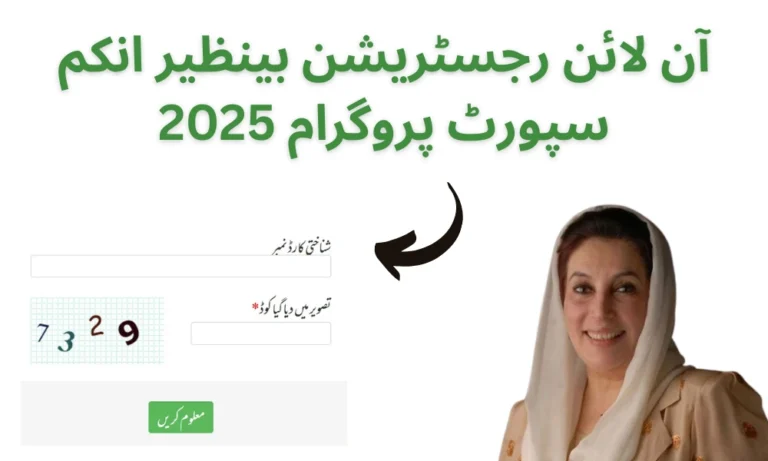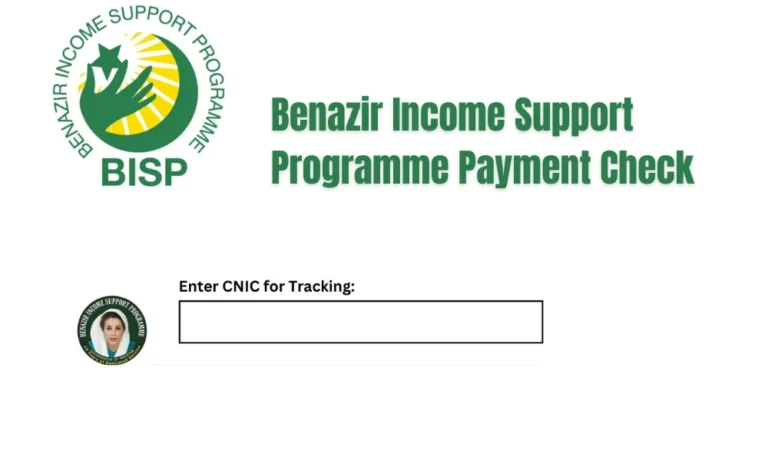Pakistan’s educational landscape is undergoing a transformative digital shift, spearheaded by initiatives designed to enhance access, transparency, and efficiency. At the heart of this revolution lies Taleem PK, an ambitious government platform aiming to become the cornerstone of the nation’s educational ecosystem.
For Taleemi Wazaif
Crucially, the gateway to harnessing the full power of Taleem PK is inextricably linked to a document every Pakistani citizen possesses: the Computerized National Identity Card (CNIC). This article delves deep into the profound synergy between Taleem PK and the CNIC, exploring how this unique pairing is reshaping educational administration, student journeys, and institutional management across Pakistan.
Understanding the Taleem PK Vision
Taleem PK is far more than just a website; it represents a comprehensive digital infrastructure for education in Pakistan. Conceived under the broader umbrella of the Digital Pakistan initiative, its objectives are multifaceted:
- Centralized Data Hub: Creating a unified, national database of students, teachers, and educational institutions.
- Streamlined Administration: Automating processes like admissions, enrollment, transfers, examinations, and result management.
- Enhanced Transparency: Providing real-time data access to stakeholders (government, institutions, parents, students) to track progress and resource allocation.
- Evidence-Based Policy: Enabling data-driven decision-making for educational planning and reforms.
- Empowering Citizens: Giving students and parents direct access to their educational records and relevant services.
Achieving these ambitious goals requires a robust, secure, and universally recognized system of identification. This is where the CNIC becomes indispensable.
The CNIC: Your Digital Identity Keystone
Issued by the National Database and Registration Authority (NADRA), the CNIC is Pakistan’s primary proof of citizenship and identity. Its unique 13-digit number, biometric data, and sophisticated security features make it the most reliable and verifiable form of identification in the country.
Its universality is key – virtually every eligible Pakistani citizen possesses one. This widespread adoption makes the CNIC the perfect foundation for integrating citizens into national digital platforms like Taleem PK.
The Taleem PK-CNIC Integration: How It Works

The integration of the CNIC into the Taleem PK framework is fundamental to its operation. Here’s how this critical linkage functions across various levels:
- Student Registration & Lifecycle Management:
- Unique Identification: When a student first registers on Taleem PK – whether for school admission, college enrollment, or university entry – their CNIC number (or B-Form number for minors, which is linked to their guardian’s CNIC and eventually converts to a CNIC) serves as their unique, lifelong identifier within the system.
- Verification: Submitting the CNIC number allows Taleem PK to instantly verify the student’s identity against the secure NADRA database, significantly reducing the risk of duplicate entries or fraudulent registrations.
- Longitudinal Tracking: The student’s CNIC acts as the anchor point throughout their entire educational journey. From primary school results to university degrees, all records are consolidated under this single identifier within Taleem PK. This eliminates the fragmentation of records previously scattered across multiple institutions.
- Admission & Enrollment: Many institutions now mandate CNIC-based verification during online admission processes facilitated through Taleem PK. This ensures the applicant is genuine and eligible.
- Teacher & Staff Management:
- Credential Verification: Teachers and administrative staff register on Taleem PK using their CNIC, enabling verification of their identity and professional credentials. This is crucial for maintaining qualified teaching staff and preventing ghost employees.
- Service Tracking: Salaries, transfers, promotions, and professional development records can be linked to the individual’s CNIC within the Taleem PK system, promoting transparency and accountability in human resource management.
- Institutional Registration & Accreditation:
- Principal/Head Verification: The registration of educational institutions (schools, colleges, universities) on Taleem PK often requires the CNIC of the head of the institution for authentication and responsibility.
- Official Recognition: Linking institutions to verified CNIC holders helps legitimize operations and combat the proliferation of unregistered or substandard entities.
- Examination & Assessment:
- Candidate Verification: During board or university examinations, students frequently need to present their CNIC (or B-Form) alongside their roll number slip (often generated through Taleem PK) for identity confirmation at examination centers. This deters impersonation.
- Result Access: Students can securely access their official results on Taleem PK portals by entering their roll number and CNIC number, ensuring privacy and authenticity.
- Scholarships & Financial Aid:
- Eligibility & Disbursement: Government scholarship programs integrated with Taleem PK rely heavily on the CNIC to verify beneficiary identity, confirm educational enrollment status, and facilitate secure, transparent disbursement of funds directly to verified bank accounts (often linked to the CNIC).
The Compelling Benefits of the Taleem PK-CNIC Nexus
The marriage of Taleem PK and the CNIC delivers significant advantages:
- Unparalleled Accuracy: Eliminates manual data entry errors and ensures information integrity by linking directly to the authoritative NADRA database via the CNIC.
- Robust Security & Fraud Prevention: Biometric verification linked to the CNIC drastically reduces identity theft, fake registrations, and ghost beneficiaries in scholarship programs or teacher rolls. Secure CNIC-based logins protect sensitive student data.
- Enhanced Efficiency: Automates verification processes that were previously time-consuming and paper-intensive. Admissions, result declarations, and transfers become significantly faster.
- National Portability: A student moving from Karachi to Peshawar doesn’t need to start a new record. Their CNIC-linked profile on Taleem PK ensures their entire history is accessible anywhere in Pakistan.
- Empowerment & Transparency: Students and parents gain direct access to records (results, enrollment status) using their CNIC, reducing dependence on intermediaries and increasing accountability.
- Data-Driven Insights: Consolidated, CNIC-verified data on Taleem PK provides the government with accurate statistics on enrollment, dropout rates, regional disparities, and teacher-student ratios, enabling targeted interventions and policy formulation.
- Financial Inclusion: Linking scholarships and stipends to CNIC-verified bank accounts promotes financial inclusion and ensures aid reaches the intended recipient securely.
Addressing Challenges and Ensuring Inclusivity
Despite its immense potential, the Taleem PK CNIC system faces challenges:
- Digital Literacy & Access: Not all citizens, particularly in remote or underprivileged areas, possess the digital skills or reliable internet connectivity needed to navigate Taleem PK platforms effectively. Awareness campaigns and simplified user interfaces are crucial.
- CNIC Coverage: While widespread, ensuring every eligible student (especially newborns and children requiring B-Forms promptly linked to guardian CNICs) and adult has a valid CNIC is an ongoing task for NADRA and local authorities. Outreach programs are essential.
- Infrastructure & Connectivity: Robust internet infrastructure nationwide is vital for Taleem PK to function seamlessly. Investment in connectivity, especially in rural areas, remains a priority.
- Data Privacy Concerns: Handling vast amounts of sensitive personal data linked to CNICs necessitates stringent cybersecurity measures, clear data protection policies, and public trust in the system’s security protocols.
- Integration Hiccups: Ensuring smooth, error-free integration between Taleem PK, NADRA’s databases, and existing institutional management systems requires continuous technical refinement and training.
The Future: Deepening the Integration
The Taleem PK CNIC relationship is poised to deepen further:
- Biometric Authentication: Wider use of biometric verification (fingerprints, facial recognition linked to the CNIC) for high-stakes processes like examination entry or sensitive data access on Taleem PK.
- Mobile App Integration: Enhanced Taleem PK mobile applications using CNIC verification for on-the-go access to records, fee payments, and notifications.
- Blockchain for Security: Exploring blockchain technology to create immutable, verifiable records of degrees and certificates linked to an individual’s CNIC, accessible via Taleem PK, combating credential fraud.
- Personalized Learning Journeys: Leveraging consolidated CNIC-linked data on Taleem PK to potentially offer personalized learning recommendations or track skill development over time.
- Seamless Cross-Government Services: Integration with other national platforms (e.g., Ehsaas, health services) using the CNIC as the common identifier, creating a holistic citizen profile accessible where permitted, including relevant educational data from Taleem PK.
Conclusion: Your CNIC – The Master Key to Taleem PK
The phrase “taleem pk cnic” encapsulates a powerful digital transformation underway in Pakistan’s education sector. Taleem PK is the ambitious platform, but the CNIC is the indispensable key that unlocks its vast potential.
This integration is not merely administrative; it’s about building a more transparent, efficient, equitable, and fraud-resistant educational system for millions of Pakistanis. It empowers students by giving them ownership of their verified records, assists institutions in managing operations effectively, and provides the government with the accurate data needed to drive meaningful reforms.
While challenges related to access, connectivity, and privacy require persistent attention, the trajectory is clear.
The secure, verified link between a citizen’s CNIC and their educational journey on Taleem PK is foundational to Pakistan’s digital future in education. As both the platform and the identification system evolve, this synergy – taleem pk cnic – will continue to be the bedrock upon which a more accessible, accountable, and high-quality education system for all Pakistanis is built.
Ensuring every citizen understands and can leverage this connection is paramount to realizing the full promise of Taleem PK and the power of their CNIC.







